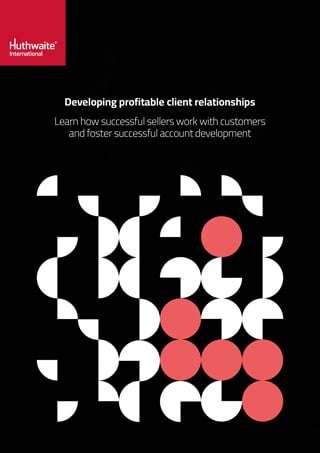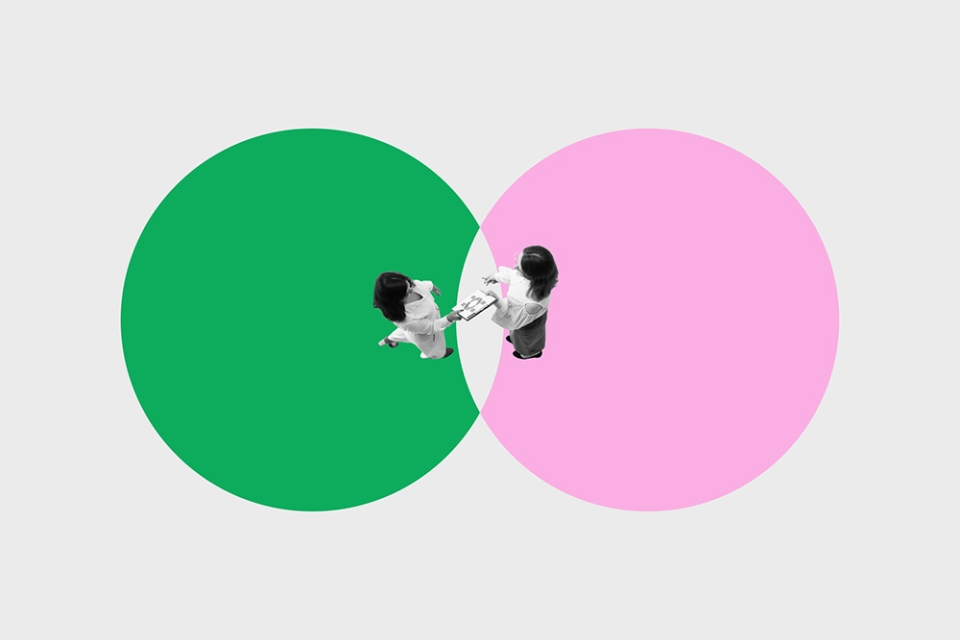We've always stressed, in talking about what makes a good set of sales behaviours, the primacy of a consultative approach that reaches to the heart of customer needs. And nothing has happened in the last 50 years significantly to change that truth, whatever fashions in sales methodologies might have come and gone in that time.
But the question we may now be faced with is: how many times are we going to have to have those conversations to make a sale?
Research published by LinkedIn seems to indicate that the number of people involved in making a buying decision has risen to its highest number ever. The average size of a buying committee today is 12.9, compared to 9.5 in 2020. Possibly that's because decisions are themselves becoming more complex, but equally there is probably a trend towards defensive positions on capital expenditure in many organisations as the economic times grow more uncertain. Put simply, the price of making a purchasing error may be higher than ever before and is certainly more visible than ever. To some extent there may be strength in numbers.
So, the question then is, how to navigate this multiplicity of varying – and possibly even conflicting – buyer roles and preferences?
We have a model that can help, alongside behaviours that bring that model to life.
.png?width=1100&name=MicrosoftTeams-image%20(17).png)
In any given decision of importance there are three types (though not necessarily only three individuals) involved in making a commitment.
The first we call the Focus of Receptivity: the person who may not be terribly close to the decision itself but who can get the skilled seller into the organisation and perhaps coach them a little on how the land lies and who the key influencers are. That person might be a casual acquaintance or a client from a previous business relationship, or just somebody who knows that their organisation has a need but who isn't necessarily the person to solve it.
Next, we have the Focus of Dissatisfaction. This is the person (more likely, several people, as the research suggests) who actually feels the pain and, possibly, but not inevitably, will at some point muster sufficient motivation to put things right that will outweigh their other time and spending priorities. And this is where the seller’s role becomes paramount.
Having made an early (and perhaps Advantage-based) case to the Focus of Receptivity in order to get a foot in the door, it is with the FoD that the opportunity to understand the needs, drill into how today's problems could lead tomorrow's crisis, and get a detailed hearing on how a solution could make things better quicker, that attention must turn. It really is worth spending time and effort here – and bear in mind that FOD defines a type of influencer within the decision, not one specific individual. If there really are 13 people on average involved in major CapEx purchasing decisions, the likelihood is that you will have to navigate more than one FOD in a sale, and that their needs will not necessarily be the same. They may not even be harmonised. The research also tells us that 16% of LinkedIn Sales Navigator sellers are more likely to close a deal if they are connected to at least 4 people within one account. And they won't all be of a single mind.
This is where deep consultative skill and the ability to make connections between a problem over here and the implication of that problem over there will draw heavily on the seller’s behavioural skill and nimble thinking.
Discover how to develop long-term, profitable client relationships. Download the whitepaper
It is really only then, having built a persuasive case on the back of several detailed and possibly difficult conversations with FODs in the organisation, that the skilled seller will approach the person who holds the purse strings and the ultimate decision-making authority: the Focus of Power. Meet that person too early in the process, given that their time and availability is probably scarce, and you are likely to present a half-baked solution to somebody who isn't going to give you a second hearing. The groundwork you do with the FOD group to build a case and to frame your value proposition in terms of Benefits, then to be able to replay that in a succinct but convincing way persuasive way to the FOP is, according to Huthwaite’s own research, the most likely way to make progress in a sale.
Yes, there might well be a requirement to re-visit the needs among a Focus of Dissatisfaction you have previously encountered, and you may not get total agreement from the FOP’s perspective that you did from everybody else. These, after all, are the people with the view from the top and may have strategic insights that belong to them alone. Which is all the more reason not to be cowed into resisting the urge to ask more questions when you get to that rarefied level. Testing that you have understood and fairly represented what everybody else has told you at that point is important. Asking fresh questions about the problems that the C-suite faces, and what the implications are of leaving those unsolved, might be daunting; but in terms of building value for your product or service it's probably the most powerful conversation you can have.
Where Procurement professionals fit on this model is always a chewy debate. My view? The CPO is likely to be in the FOP group, but the category managers and other professional buyers will have dissatisfactions and concerns that you should be confronting and trying to solve early on, in the FOD discussions. Leave them out now, and the omission will come back to bite you later. Include them early, of your own volition, and they’ll be flattered. They’re not used to that much attention. Huthwaite’s own research proves it.
Discover the key to unlocking future opportunities by ensuring long-term relationships with clients. Download the whitepaper
It's also worth remembering that because certain people represent certain roles (FoP, FoD, FoR) in one particular opportunity, those same people might all assume different roles (or none) if you're engaged in pursuing another opportunity with the same organisation. That's the point about flexible opportunity management models. They recognise and carry within them the inherent truth that nothing ever stays the same and people’s needs and decision guidelines are constantly changing. If you are a truly skilled strategic seller, no matter how many people sit on that buying committee, your navigation skills and consultative behaviours should win through.
Learn more about the three foci, build stronger customer relationships and win more business opportunities with our Sales Opportunity Management training that gives salespeople the insight, techniques and strategy to deal with larger and more complex sales.
"Our collaboration with Huthwaite has been instrumental in upskilling and empowering over 100 of our colleagues globally. It has provided us with a robust framework to engage with our clients more effectively, fostering a consultative approach that's results driven. As we look to the future, we are excited about the integration of SPIN® with generative AI and the potential it holds for revolutionising the sales landscape."
– Myles Davidson, Head of Sales, Zühlke

Get the thing here
Discover how a software company boosted sales by 50% through SPIN sales training, along with more success stories, in our free download: SPIN Evidence of Return on Investment.

Get the thing here
Discover how a software company boosted sales by 50% through SPIN sales training, along with more success stories, in our free download: SPIN Evidence of Return on Investment.








.webp)